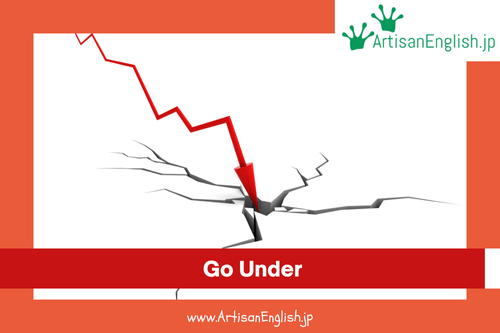
YouTube / iTunes / Spotify / Radio Public / Pocket Casts / Google Podcasts / Breaker / Overcast
Listen to ArtisanEnglish.jp posts & lesson intros here.
WotD: Go under
In the world of idiomatic expressions, go under has multiple meanings and uses.
It can primarily refer to sinking below the surface of water, as when we say, “The Titanic began to go under after hitting an iceberg.”
However, it also has a metaphorical usage, meaning financial failure or collapse.
Understanding this usage is key to gaining a deeper insight into the world of business and finance.
Businesses float on a financial ocean, so English has the saying a rising tide lifts all boats.
Just as good times benefit all companies, bad times negatively affect everyone.
When we say a company is going under, it is struggling or facing bankruptcy.
This can happen due to financial mismanagement, tough economic times, or industry disruption.
In business, going under is often associated with adverse outcomes, such as insolvency, closure, or liquidation.
The impact of a company going under extends beyond its immediate stakeholders, affecting the broader economy and community.
Employees lose their jobs, suppliers face unpaid bills, and customers lose access to products or services they rely on.
Then, of course, there are the unwanted spin-off effects on the greater community.
Without income, people no longer shop in local stores or use services, which hurts the bottom lines of those businesses.
Darwin’s theory of survival of the fittest and the interconnectivity of ecosystems applies to the business world as much as the natural world.
Recognizing the implications of a business going under is crucial in understanding the far-reaching consequences of economic instability.
It highlights the significance of prudent financial management and adaptability in the face of adversity.
If companies don’t adapt to changing market circumstances, they will die.
By recognizing the warning signs and taking proactive measures, businesses can mitigate the risk of going under and work towards long-term sustainability.
Flesch-Kincaid Readability Test
This post is understandable by someone with at least a university-level reading ability.
On the Flesch-Kincaid reading-ease test, this post scores 39.
The easier a passage is to read, the higher the score on a scale of 0 – 100.

